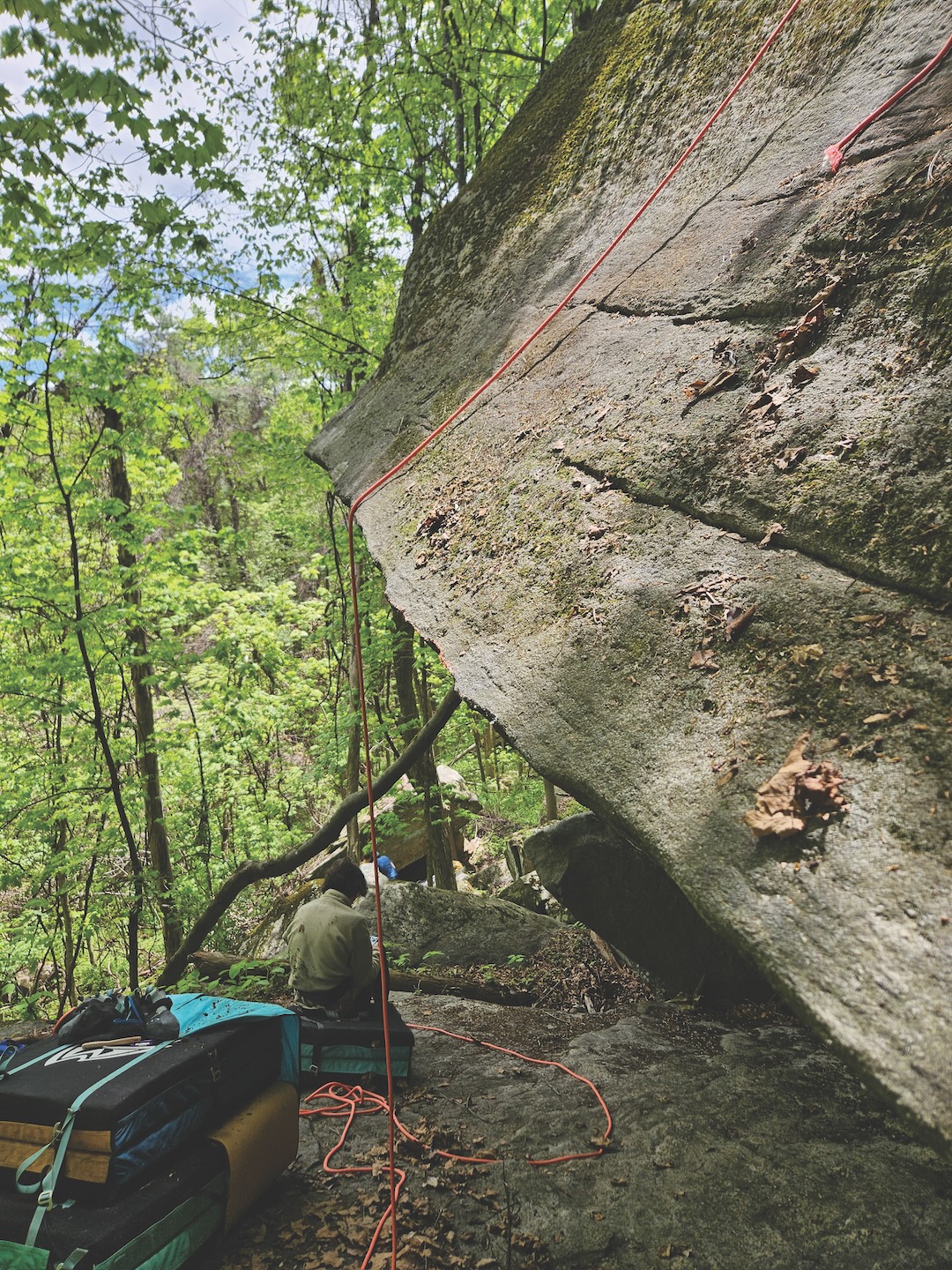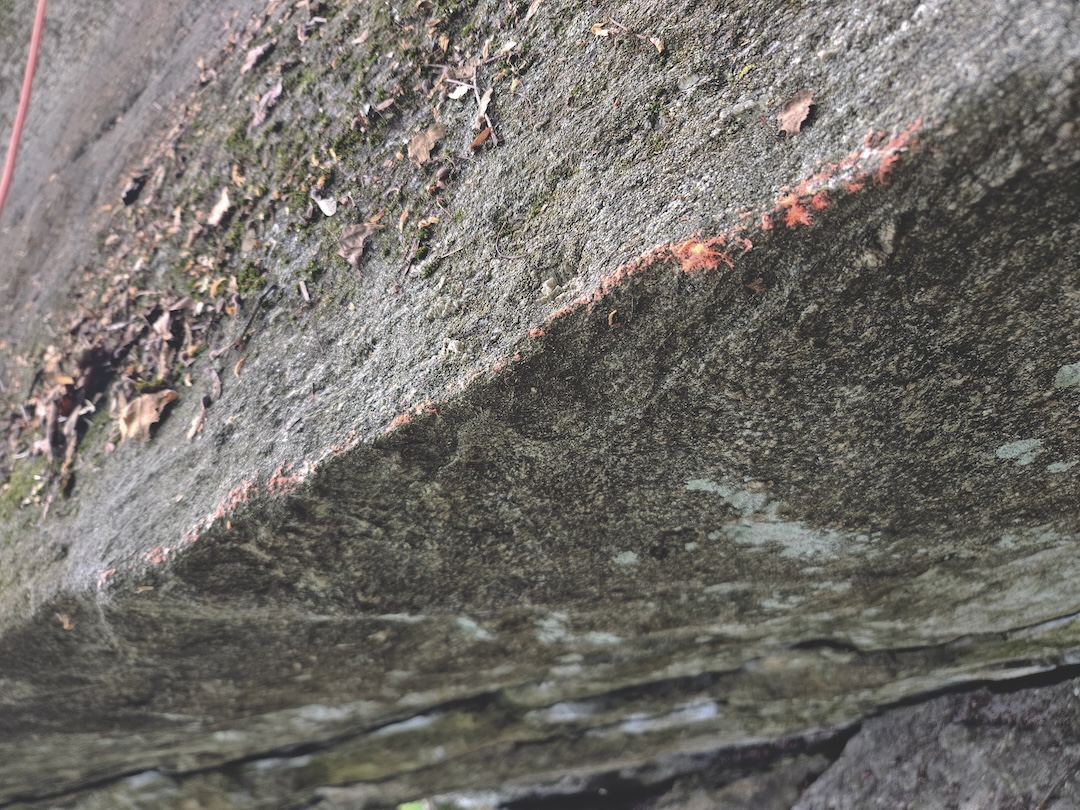Short Fall to Ground — Rope Severed by Rock Edge
Massachusetts, Farley Ledges, Pot Ledge Buttress

On May 11, Tom Neary and his brother Paul were checking out a new boulder. At the top, they tied their 9.5mm dynamic rope to a tree. This created two lengths of rope with both ends reaching the ground. This allowed them to simultaneously rappel and clean moss and dirt from the 20-foot-plus boulder. The first 10 to 12 feet of the rock were overhanging. At the lip, the angle dramatically kicked back to a slab. This juncture of overhang and slab formed a straight, horizontal edge whose exterior angle was around 60°.
While on rappel and cleaning below the lip, Paul slid sideways. The brand-new rope, tensioned under body weight, was pulled across the edge. It cleanly and completely severed. The younger Neary fell four feet, landing on flat rocks below the boulder. He thankfully suffered only minor injuries.
ANALYSIS
It’s never a good idea to run a rope, especially a dynamic rope, over an acute edge. While these climbers felt the lip was not extremely sharp, they did not account for the sliding motion of the rope going back and forth. On occasion, a climber might fall or lower over a sharp edge, but the force is not often concentrated on the isolated radius while loaded. In this case, the side-to-side motion acted like a saw blade.
There have been several fatalities over the years when a tensioned rope—often with a climber jumaring on one end—severed over an edge. By way of experiment, one can saw a tensioned rope across the edge of a brick (a mere 90° angle). The rope will cut in less than a minute. When ascending or working on a fixed line, a static rope is much less susceptible to abrasion or cutting over edges. (Sources: Tom Neary and the Editors.)


